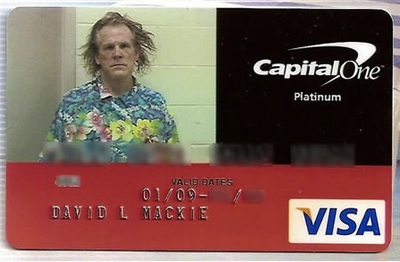|
By understanding that material culture doesn't necessarily exist in one inert/defined form but it is an evolving circle where popular culture and cultural beliefs influence objects (such as Jesus on candle or Hello Kitty on a credit card credit card), while vise-a-verse where objects also influence popular culture and consumption (such as Keith Richards and Angelina Jolie's Louis Vuitton campaigns and or Betty White endorsing LifeLine)
The idea of commodity-ization can easily be defined by both the check book and credit card, as they equate to capital. There are several banks (and third party organizations) that allow customers to personalize both their credit card and check books too. Simply upload a Jpeg photo of your family or God knows what, and voila buying power and a better chance at having your identity stolen. This credit card and check book market are saturated with customization and personal-ization where you can choose from your a variety of pop culture icons; cartoons, animals, landscapes, foods, slogans, motorized vehicles, and let's not forget cultural and political beliefs such as Pro-Life Checks and or a more philanthropic way of giving where a percentage of each transaction goes to the SPCA and Breast Cancer Awareness. If customizing isn't enough, consider the gold encrusted and diamond embedded Visa which is unfortunately issued by invitation only. Nothing says luxury like this otherwise seen as impersonating the black Amex with it's mere $10,000 in initiation and annual fees. Another way to completely participate in pop culture is to enroll in celebrity sponsored credit cards, such as the 2010 Kardashian Kard which was later pulled from the market due to backlash over it's outrageous fees. So rather than printing counterfeit money with your photo on it, you now have an opportunity to customize you buying power thanks to the intersection of popular culture and material culture.
0 Comments
Leave a Reply. |
LAJ
100 Objects of Popular and Material Culture is an blog exploring the manifestations of human consumption and commodity-ization. The purpose of this experiment is to explore material and popular culture in contemporary society by using objects and concepts to prompt wider questions and reflections. So by emulating The British Museum's and Neil MacGregor's format of A History of the World in 100 Objects I plan to satirically analyze and reinterpreted 100 material culture objects over the course of 2014. Material Culture is the study of our culture's consumption of stuff; namely the manifestation of culture through material productions where people's perceptions of objects is socially and culturally dependent. With this, objects reflect conscious and unconscious beliefs on the the individuals who fabricated, purchased, or used them, and by extension the society where they live. So examining materiality, cultural truths and societal assumptions may be discovered. As anthropologist Arjun Appaduai states "in any society the individual is often caught between the cultural structure of commodity-ization and his own personal attempts to bring a value and order to the universe of things." Objects and commodities make up a much larger symbolic system consisting of want and need, socio-economic status, fashion, etc. Often times form follows function whether the commodity, market, and or consumer forever evolve around one-another. Philosopher Pierre Bourdieu's theories of capital flow full circle; where regardless if you are a minimalist or a hoarder the world is made up of things and everyone will leave their footprint on the earth. So by humorously analyzing marketed objects and concepts, hopefully this blog will provide further incite into ideas of over-consumption, a disposable society, consumerism vs. anti-consumers, planned obsolescence vs. sustainability, as well as the greater good of mankind and future generations. Archives
March 2015
Categories |










 RSS Feed
RSS Feed